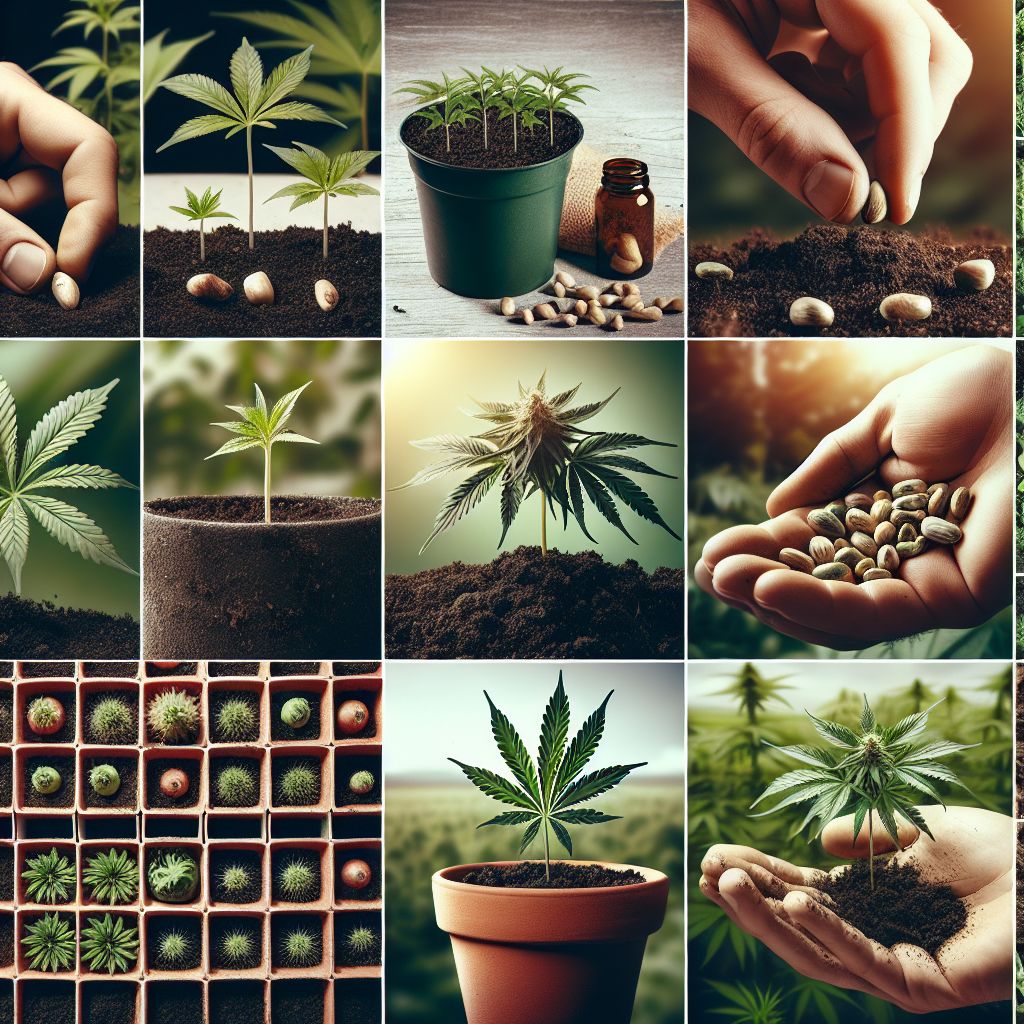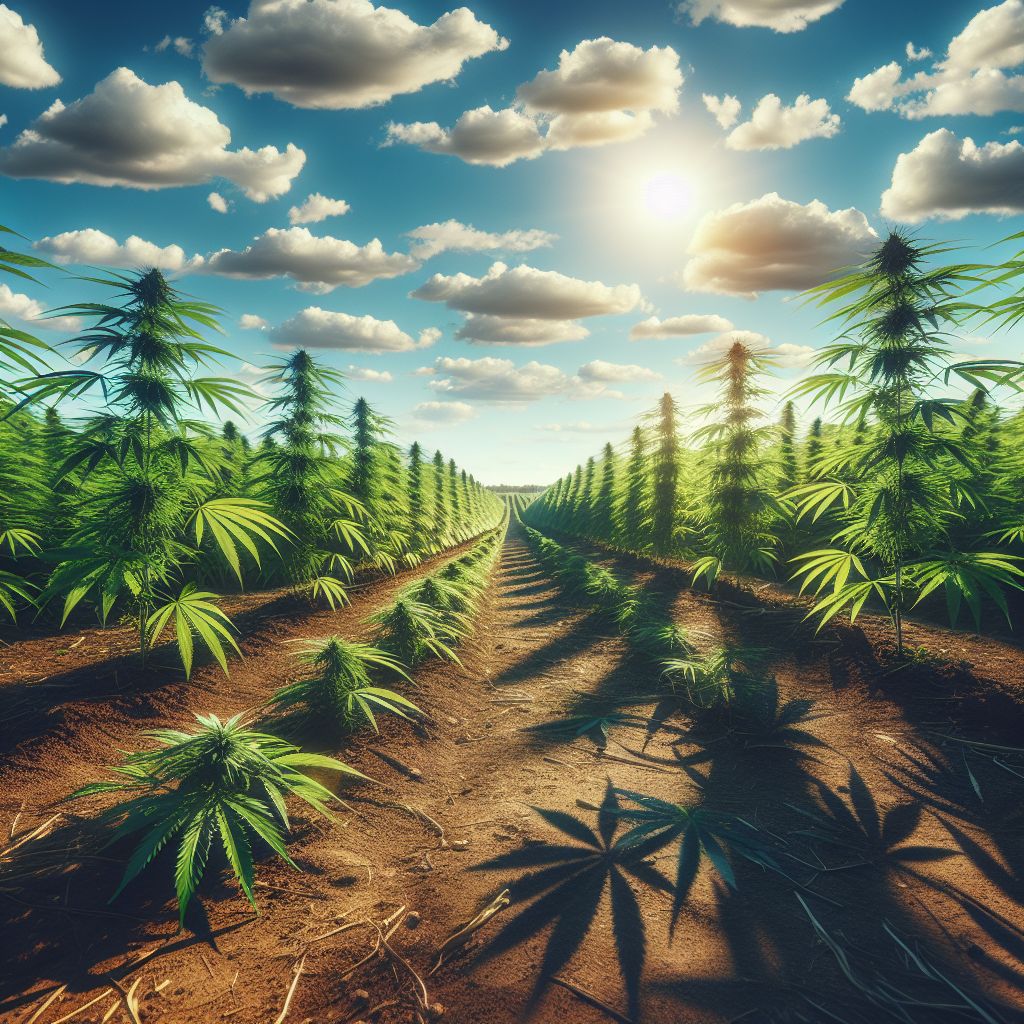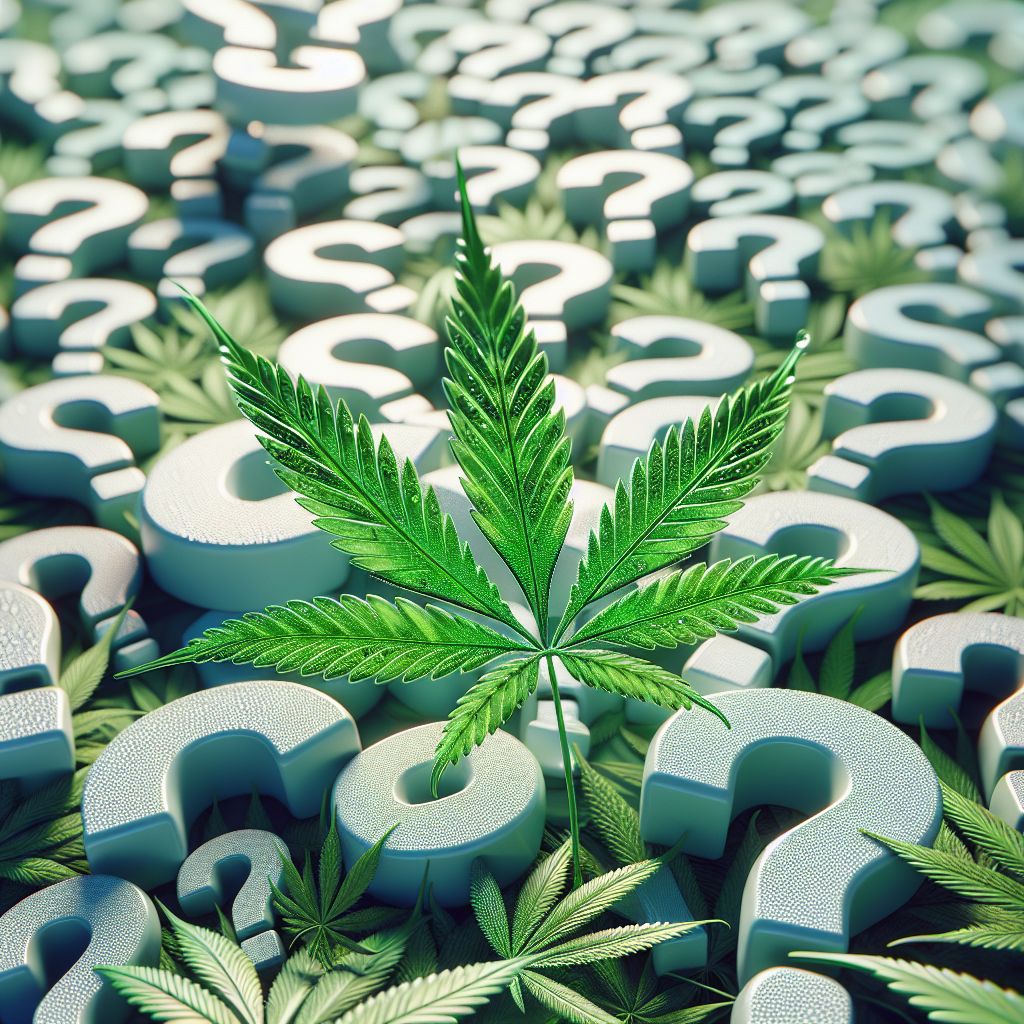
Key Takeaways
- Cannabis sativa is a species of plants that includes Hemp and Marijuana.
- Hemp contains 0.3% or less THC (tetrahydrocannabinol) and has a many of industrial uses.
- Marijuana contains higher than 0.3% THC and is mainly used for medicinal and recreational purposes.
- The legal status of hemp was established under the 2018 Farm Bill, making it federally legal in the US; marijuana legality varies by state.
- Both hemp and marijuana have distinct agricultural needs and end-uses, which influence their cultivation and market value.
Hemp, Marijuana, and Cannabis Defined
First off, cannabis is the umbrella term for a genus of plants that encompasses both hemp and marijuana. Think of it as a family name, with hemp and marijuana being the members. They look similar, but like siblings with different personalities, they have distinct characteristics.
Cannabis Explained
Cannabis is a flowering plant in the Cannabaceae family, which includes over 170 plant species. Within this family, the Cannabis sativa species is the most common and is the one we’re focusing on. Both hemp and marijuana come from this species, but they are cultivated for different purposes due to their unique cannabinoid profiles.
Hemp: The Low-THC Plant with High Potential
Hemp is a versatile crop known for its low THC content — 0.3% or less, to be precise. This means it doesn’t have the psychoactive effects associated with marijuana. Hemp’s uses are vast and varied, from textiles and paper to biodegradable plastics and even food products. Its seeds and oil are highly nutritious, and the fibers can be used in construction materials.
Marijuana: Beyond the High
Marijuana, on the other hand, is all about its higher THC levels. This is the plant that’s typically associated with recreational use due to its psychoactive effects. However, it’s not just about getting high; marijuana also has a range of medicinal benefits, providing relief for conditions such as chronic pain and anxiety.
Legal Lines: Hemp and Marijuana Under the Law
Understanding the legal distinctions between hemp and marijuana is key to navigating their use and distribution. Let’s break it down.
Marijuana Legality: State by State
Now, marijuana’s legal status is a bit more complicated. It remains illegal under federal law, but many states have passed their own laws permitting its use, particularly for medicinal purposes. Some states have even legalized recreational use. It’s a patchwork of regulations that requires careful attention to state-specific laws.
Growing and Using Hemp and Marijuana
Whether you’re a farmer, a consumer, or just plain curious, the journey of hemp and marijuana from seed to shelf is a fascinating one. Each plant requires specific conditions to thrive, and their end products serve very different purposes. Let’s explore these differences in greater detail.
Cultivating Differences: Hemp vs. Marijuana Agriculture
Hemp is a hardy plant that can grow in a variety of climates. It’s relatively easy to cultivate and is often grown in large fields similar to crops like wheat or corn. Hemp plants are typically grown closely together and can reach heights of up to 4 meters. They have a shorter growing season, allowing for multiple harvests in certain regions. On the flip side, marijuana requires a controlled environment with precise lighting, temperature, and humidity to optimize the production of THC-rich flowers. These plants are often grown further apart to allow for branching and are usually shorter than hemp plants.
Industrial Hemp: A Multitude of Uses
The versatility of hemp is truly impressive. Its stalks provide strong fibers for textiles and construction materials, while its seeds are a source of nutrition, rich in protein and essential fatty acids. Hemp oil, derived from the seeds, is used in a range of beauty and skincare products. Even the leaves and flowers, with their CBD content, have found their place in the wellness industry. Hemp’s sustainability and the fact that it can be used in its entirety make it a favorite for eco-conscious consumers and producers.
Moreover, hemp’s rapid growth and minimal care requirements mean it’s a sustainable choice for farmers. It requires less water than many crops and doesn’t need high levels of pesticides or herbicides, making it a friendlier option for the environment.
Because of its low THC content, hemp is not subject to the same strict regulations as marijuana, allowing for more widespread cultivation and a broader range of products. The industrial applications of hemp are expanding as technology advances, with innovations like hempcrete and biodegradable hemp plastics gaining traction.
Marijuana: Recreational and Medicinal Applications
Marijuana’s primary uses fall into two categories: recreational and medicinal. The recreational aspect is probably the most well-known, with users valuing the plant for its psychoactive effects that can induce relaxation and euphoria. However, the story doesn’t end there. Marijuana’s rich cannabinoid profile, including THC, CBD, and other compounds, has been shown to offer therapeutic benefits. These include pain relief, anti-inflammatory effects, and anxiety reduction, to name a few.
The cultivation of marijuana for these purposes is a meticulous science. Growers carefully monitor their plants to ensure the highest quality and potency. This attention to detail, along with the legal restrictions on marijuana, often results in a higher cost for the end product compared to hemp.

The Science of Cannabinoids: THC and CBD Demystified
At the heart of the differences between hemp and marijuana lie cannabinoids — the chemical compounds found in the cannabis plant. The two most well-known cannabinoids are THC (tetrahydrocannabinol) and CBD (cannabidiol). THC is the compound responsible for the psychoactive effects of marijuana, while CBD is known for its therapeutic benefits without inducing a high.
Understanding these compounds is essential for consumers and producers alike. THC and CBD interact with the body’s endocannabinoid system, but they do so in different ways. THC binds with receptors in the brain, resulting in the feeling of being high, whereas CBD has a more indirect effect and is being studied for its potential to relieve pain, anxiety, and other conditions.
Because of these differences, hemp and marijuana are used to produce a range of cannabinoid-based products, each tailored to specific uses and legal frameworks. As we continue to learn more about these plants and their compounds, the possibilities for their use seem to grow exponentially.
THC: The Psychoactive Player
THC is the main psychoactive component in marijuana that gives users the sensation of being high. It’s found in high concentrations in the plant’s flowers, or buds. The effects of THC include altered senses, changes in mood, impaired body movement, and, in some cases, an altered sense of time. The intensity of these effects can vary based on the strain of marijuana and the amount of THC it contains.
CBD: Therapeutic Without the High
CBD, on the other hand, does not cause a high. It’s found in both hemp and marijuana, but hemp is particularly rich in CBD, which has led to the explosion of hemp-derived CBD products on the market. Users report relief from a variety of ailments, including chronic pain, inflammation, anxiety, and seizures, without the intoxicating effects of THC.
It’s important to note that while CBD is legal at the federal level when derived from hemp, state laws can vary. Always check your local regulations before purchasing or using CBD products.
Summary Table
References:
https://msutoday.msu.edu/news/2021/cbd-marijuana-and-hemp
https://www.cornbreadhemp.com/blogs/learn/hemp-vs-marijuana
https://uk.naturecan.com/a/blog/cbd/what-is-hemp/
https://www.medicalnewstoday.com/articles/hemp-cbd-vs-cannabis-cbd
https://theconversation.com/cbd-marijuana-and-hemp-what-is-the-difference-among-these-cannabis-products-and-which-are-legal-154256
https://www.forbes.com/health/body/cbd-oil-cost/

FAQ
Can You Get High from Hemp?
Simply put, no. Hemp contains such a low level of THC — less than 0.3% — that it cannot produce the psychoactive effects that lead to a high. This is why hemp can be legally grown for industrial and commercial use, including the production of CBD products that do not induce a high.
Is CBD Oil Legal Everywhere?
Federally, CBD oil derived from hemp with less than 0.3% THC is legal. However, state laws can vary significantly. Some states have embraced CBD oil and allow for its sale and use without restrictions, while others have specific requirements or do not permit the sale of CBD oil at all. It’s essential to check the laws in your state before purchasing or using CBD oil.
What Are the Medicinal Benefits of Marijuana?
Marijuana has been recognized for its medicinal properties, with research showing potential benefits including pain relief, nausea reduction, and improved appetite for those undergoing chemotherapy. It may also help with chronic pain, multiple sclerosis, and seizure disorders. The efficacy of marijuana as a medicinal plant continues to be a subject of extensive research and debate.
How Can I Tell Hemp and Marijuana Apart?
While hemp and marijuana can look similar, there are some key differences. Hemp plants typically grow taller and have thinner leaves with less dense foliage, whereas marijuana plants are shorter, bushier, and have broad leaves. Additionally, hemp plants are often grown together closely, while marijuana requires more space to branch out. A closer examination would reveal the difference in THC content, but this usually requires lab testing.
- Look at the leaves: Hemp leaves are typically skinnier, while marijuana has broad, dense leaves.
- Consider the plant’s height: Hemp plants can grow up to 4 meters tall, much taller than typical marijuana plants.
- Check the growing density: Hemp is grown closely packed, while marijuana plants need more space to branch out.
- Observe the buds: Marijuana plants have more buds, which is where the majority of THC is located.
- Understand the usage: Hemp is often grown for industrial use, while marijuana is cultivated for its THC-rich flowers.
Could Hemp Replace Plastic or Other Common Materials?
Hemp has the potential to replace plastics and other materials due to its sustainability and versatility. Hemp can be used to make a bioplastic that is biodegradable and non-toxic. It’s also being used to create hempcrete for construction, which is lighter and more sustainable than traditional concrete. As we seek eco-friendly alternatives to reduce our environmental footprint, hemp’s role in material science seems poised to grow.
With its minimal environmental impact, rapid growth, and renewable nature, hemp could be a key player in creating more sustainable materials. While it may not replace all plastics and materials, its potential applications are expansive and promising for a greener future.




Leave a Reply